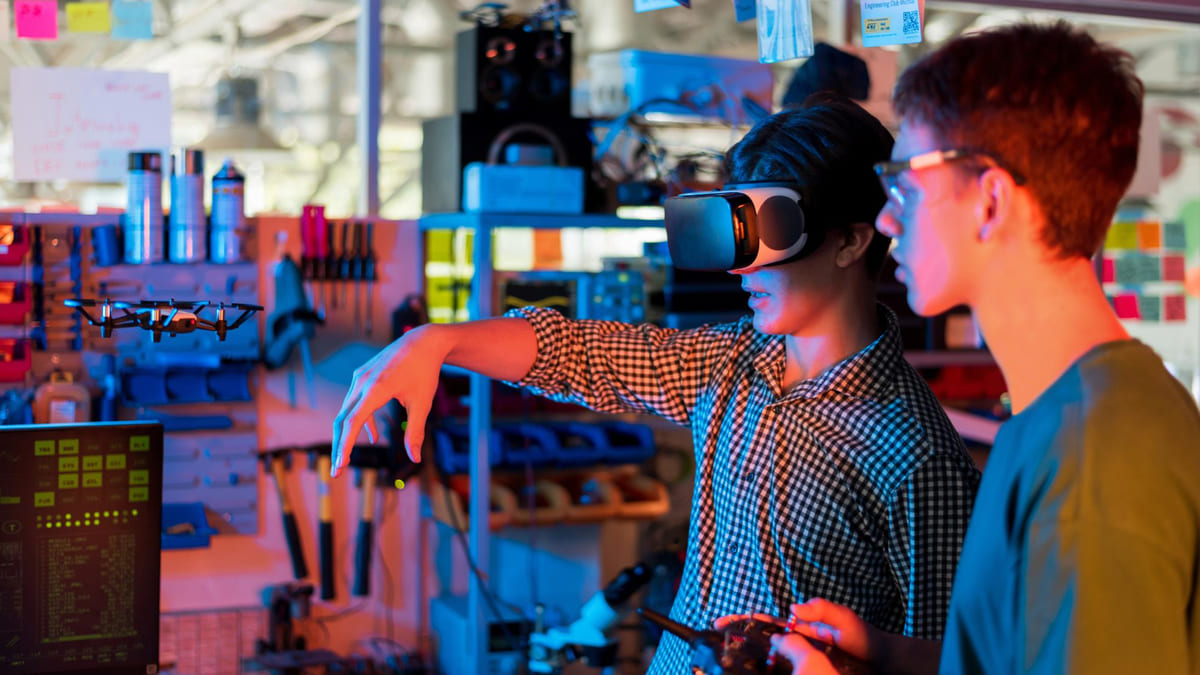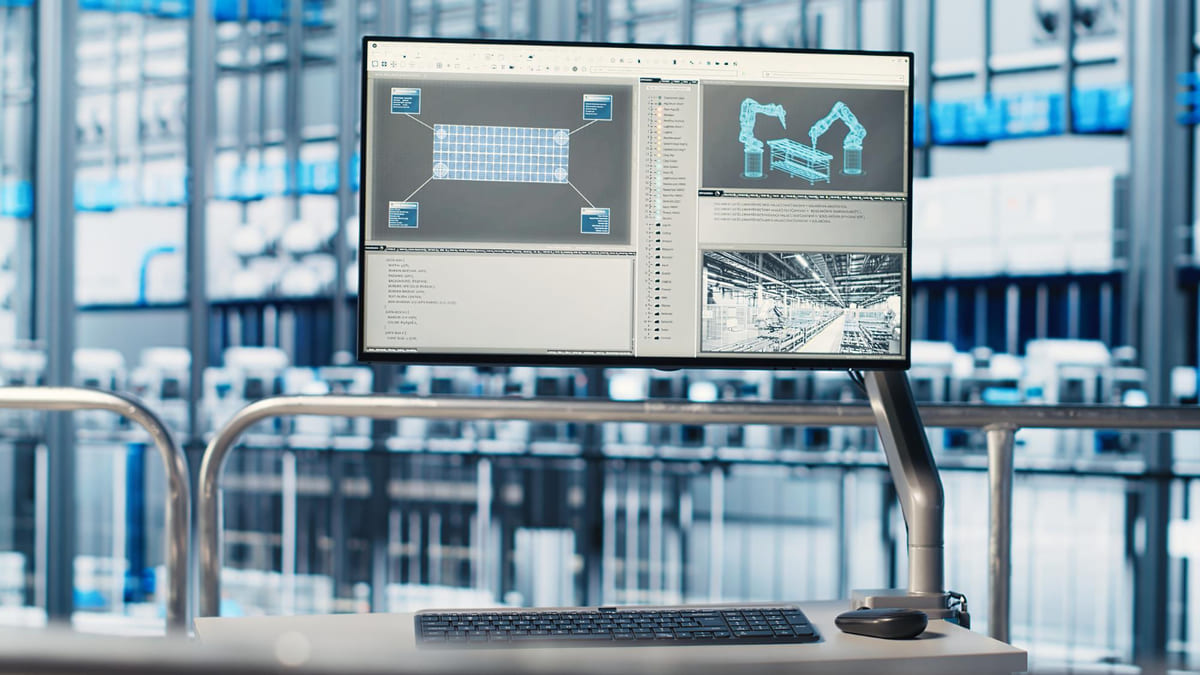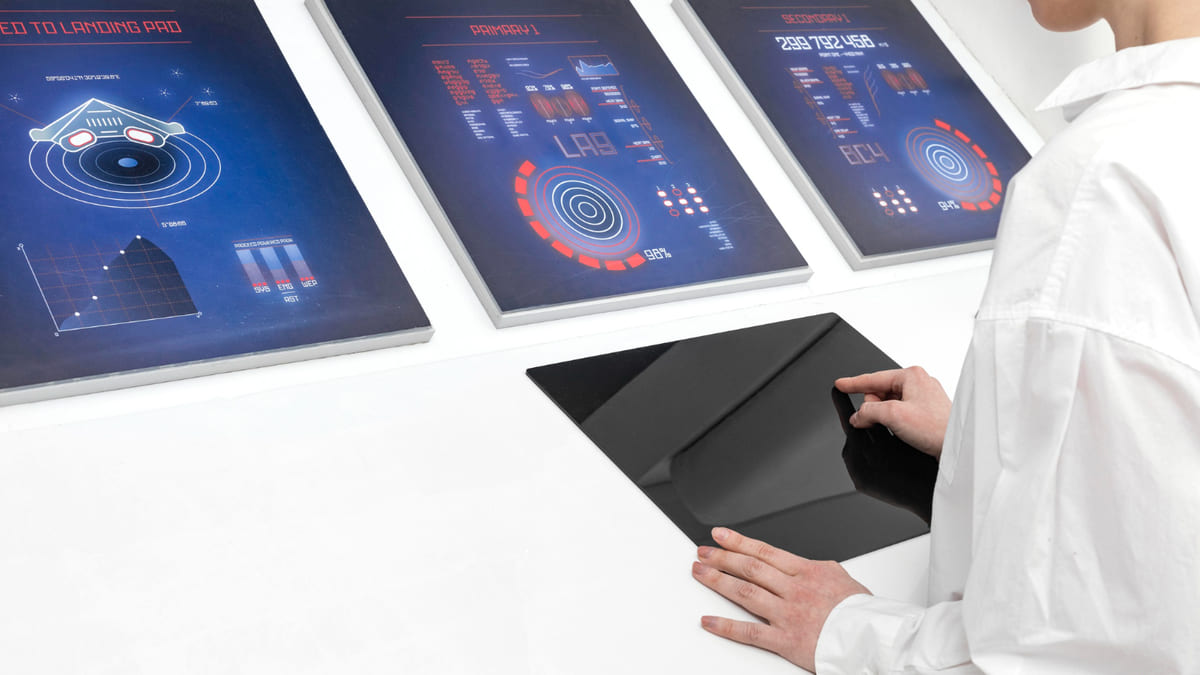Digital fabrication trends in construction refers to the use of digital design data to automate the production and assembly of building components. This includes techniques like 3D concrete printing, CNC milling, laser cutting, and robotic assembly, often guided by BIM models. By connecting design software directly to manufacturing, digital fabrication enables “smart” building processes with greater precision and fewer manual steps.
For example, a BIM model can automatically generate CNC cutting files or robot toolpaths. In practice this means on-site robots or off-site factories receive digital instructions to manufacture elements. Embedded IoT sensors also tie into this workflow by providing real-time monitoring of printed or prefabricated components during and after construction. Together, these technologies bring digital workflows and automation into both on-site and off-site construction, improving coordination and data-driven decision-making.
Table of Contents
Trend 1: Large-Scale 3D Concrete Printing
Large-scale 3D concrete printing uses gantry or robotic extruders to lay down concrete layers, producing walls or even entire building sections on site. This method reduces the need for traditional formwork and can build very complex shapes directly from digital models. It speeds up construction dramatically – projects that normally take months can often be printed in days. 3D concrete printing also cuts material waste because only the necessary amount of concrete is deposited.
Studies estimate that automated printing can slash construction waste by roughly 30–60% and shorten building time by 50–70%. In practice, Chinese firm WinSun demonstrated this potential by 3D-printing ten houses in 24 hours and a five-story apartment building a few years ago. Similarly, Dubai’s municipality partnered with Apis Cor to 3D-print a 6,900 ft² municipal building on site. These examples show how large-scale concrete printing can produce habitable structures faster and with less waste, illustrating a major digital fabrication trend on both on-site and near-site construction.
Trend 2: Robotic Masonry and On-Site Assembly
Robotic masonry involves automated machines that lay bricks or blocks on site. For instance, Australia’s FBR offers the Hadrian X, a truck-mounted robot that can lay concrete blocks continuously from a 3D CAD plan with minimal human intervention. The Hadrian X can place a block every 45–50 seconds, and its precise automation is reported to “produce far less waste than traditional construction methods while dramatically improving site safety”.
In the U.S., Construction Robotics’ SAM100 semi-automated mason can lay 2,000–3,000 bricks per day, with reports of up to a 400% productivity increase and 50% fewer labor hours required. Even bricklaying support robots like MULE (by Construction Robotics) have doubled worker productivity by assisting with heavy lifting. These robotic masonry systems greatly speed up wall assembly and reduce repetitive labor. They exemplify the trend of on-site robotics: by automating manual tasks, they improve build speed and consistency while reducing physical strain on workers.
Suggested article to read: Construction Robotics; 2024 Guide

Trend 3: Modular Construction Using CNC and Laser Cutting
Modular construction factories increasingly use CNC routers and laser cutters to pre-fabricate building modules and panels with high precision. In a controlled factory setting, materials like wood, steel, and concrete elements are cut and assembled from digital designs using computer-controlled machines. This ensures that each piece matches the BIM model exactly. For example, wall panels, roof trusses, and piping supports can be CNC-cut to tight tolerances, then shipped as complete modules to the site.
This off-site approach speeds up on-site assembly (modules are “plug-and-play”) and improves quality. A British study found that factory-built modular projects can reduce construction waste by up to 90% compared to conventional builds. By minimizing on-site cutting and errors, CNC/laser cutting in factories cuts labor and scrap. Many large projects now use volumetric modules or panelized systems with digitally cut components, demonstrating how modular off-site fabrication is a key trend in construction’s digital transformation.
Trend 4: Hybrid Additive-Subtractive Manufacturing for Custom Components
Hybrid additive-subtractive manufacturing combines 3D printing with CNC machining to make complex custom parts. In construction, this can mean printing a rough shape of a bespoke component and then using CNC milling or laser cutting to finish it to precise dimensions. This hybrid approach is useful for elements that need unique geometry with tight tolerances. For example, Shanghai has developed a massive printer with built-in CNC capability to fabricate large structural parts – a 144 m³ “additive-subtractive” system was built in 2018 for printing a pedestrian bridge.
Likewise, architects have used 3D-printed foam molds for free-form concrete forms, then CNC-planed them to smooth the surfaces. By combining the flexibility of 3D printing with the accuracy of machining, hybrid manufacturing allows one-off connectors, formwork patterns, or façade panels that would be impractical to make by hand. These on-site or factory-based hybrid machines can thus produce customized elements faster and with minimal hand-finishing, showing how digital fabrication merges additive and subtractive processes for construction needs.
Trend 5: BIM-Driven Fabrication Automation
Building Information Modeling (BIM) is increasingly driving automated fabrication workflows. Detailed BIM models can automatically generate shop drawings, CNC instructions, or robot programs for construction. In practice, firms use BIM data to run factory machinery and prefabrication lines. For example, construction companies are linking BIM directly to CNC robots to mill steel connectors or wood joinery from the design model. The benefit is that the digital plan becomes the digital factory order, reducing errors and coordination effort.
In one case study, an MEP contractor used BIM-enabled prefabrication to deliver customized pipe supports: by prefabricating them off-site from the model, the installation time was cut by up to 50% and material waste by 20%. On-site, BIM models can also guide robotic assembly or ensure that delivered modules fit correctly. Overall, BIM-driven automation means designs go from screen to factory floor more seamlessly, aligning with the broader smart manufacturing trend of ‘design-to-production’ in construction.
Trend 6: Real-Time Monitoring with Embedded IoT Sensors
Another digital trend is embedding Internet of Things (IoT) sensors into construction elements and machinery for real-time monitoring. Sensors embedded in concrete, steel, or components can track strain, temperature, humidity and other parameters as a building cures or operates. For instance, wireless sensors placed in a 3D-printed concrete headwall at Cambridge University monitored temperature, pressure, and moisture in the structure during printing. More generally, IoT devices on construction sites can measure conditions and report data continuously.

This real-time feedback improves outcomes: anomalies in a printed wall or precast element can be detected immediately, enabling quick corrections or quality assurance. Sensors in heavy equipment can also predict maintenance needs, and RFID/GPS tags can track prefabricated modules from factory to site. By feeding live data into digital models, teams can adapt construction on the fly. In effect, embedded sensors turn buildings and sites into self-reporting systems, aligning fabrication with operation. This leads to smarter, data-driven construction management and maintenance.
Trend 7: Portable FabLabs for Remote Construction Sites
Portable fabrication laboratories (“FabLabs”) bring digital manufacturing tools to remote or on-site locations. These are typically workshops built into trailers or shipping containers, stocked with 3D printers, CNC routers, laser cutters and power supplies. By having a mini-factory on wheels, builders can produce needed parts on demand without flying them in. For example, Cuby (a startup) demonstrated a self-contained plant that drives onto a site, manufacturing wall panels and structural modules from a digital design.
Cuby’s transportable factory employs lean manufacturing to produce building parts near the job site, rather than shipping finished goods long distances. This concept was described as a “transportable factory” that brings prefab production right next to the construction area. In practice, mobile FabLabs have been used in disaster relief and remote communities to fabricate shelters and infrastructure pieces. By combining digital design with local fabrication, these portable factories enable off-grid construction flexibility, aligning with trends in both on-site innovation and modular off-site production.
Trend 8: Circular Construction and Digital Reuse Planning
Sustainability is driving construction towards circular economy models, aided by digital planning tools. “Circular construction” uses digital systems to plan for reuse of materials and components instead of waste. Digital platforms aggregate information on available reclaimed materials or building life cycles. For instance, the EU’s CIRCuIT project has launched a Material Reuse Portal – a web platform that lists surplus construction materials from various sources to make them easier to find and reuse.
In practice, architects and planners can search such portals during design to specify reused bricks, steel or panels. Similarly, “material passport” databases like Madaster (Netherlands) digitally document all materials in a building. This allows future renovation or deconstruction to systematically recover components. By integrating these tools with BIM and project planning, teams can plan buildings so that parts can be easily reused or recycled later. In short, digital reuse planning tools connect design and supply chains, reducing waste and turning construction into a more sustainable, circular process.
Trend 9: Parametric Design for Material and Energy Optimization
Parametric design uses algorithms and adjustable parameters to optimize building form, material use, and energy performance. In practice, architects and engineers use parametric modeling (e.g. Grasshopper, Dynamo) to explore many design variants and select the best based on set criteria. For example, structural designers can parameterize beam sizes, grid spacing, or geometry and then analyze each variant for efficiency.
An expert from Structure Magazine notes that performance metrics in parametric design can include material volume or embodied carbon of elements. This allows designers to minimize the materials needed while still meeting strength and code requirements. Parametric tools also adapt building shapes to environmental data: for instance, a parametric façade can automatically adjust its shading pattern based on sun angles to reduce cooling loads.
By iterating through millions of geometric options quickly, parametric workflows drive leaner, more energy-efficient structures. Real-world examples include optimized concrete roofs and low-energy façades, where parametric algorithms reduced material usage and improved passive solar performance. Thus, using parametric design for optimization is a major fabrication trend that cuts waste and energy use in building projects.

Trend 10: AI-Based Generative Fabrication Planning
Artificial intelligence (AI) is beginning to shape how construction is planned and scheduled. Generative AI tools can rapidly evaluate vast numbers of build sequences and resource plans to find optimal construction strategies. For example, generative scheduling software (like tools from ALICE Technologies or new Autodesk Flow modules) can test millions of scenarios to optimize labor, equipment, and sequencing. McKinsey reports that such tools “can test millions of schedule configurations and find the optimal work sequence and resources for a project in a matter of minutes”.
In practice this means a project team can input constraints (tasks, crews, calendars) and let the AI generate an efficient build plan. Once a schedule is chosen, it can be continuously updated as conditions change. The result is smarter construction scheduling, where material deliveries, prefabrication jobs, and on-site assembly are coordinated by AI to save time and cost. By applying generative algorithms to construction planning, builders can adapt in real time and maximize productivity – a clear example of AI-infused digital fabrication workflow.
FAQs
How are Digital Fabrication Trends transforming building site operations?
Digital Fabrication Trends like on-site 3D printers and masonry robots are automating tasks that used to be manual. They take digital designs and translate them directly into physical components, speeding up work and reducing error. For example, robotic bricklayers can build walls faster and with less waste than traditional crews. Overall, these trends mean work that once took months can often be done in weeks, as machines follow digital blueprints on site.
What benefits do Digital Fabrication Trends bring to construction efficiency and sustainability?
Digital Fabrication Trends improve efficiency by cutting out manual steps and rework. Prefabrication in CNC factories and AI planning tools minimize delays and optimize material use. This leads to faster schedules and lower costs. On the sustainability side, digital methods reduce waste: one study found prefabrication can cut construction waste by up to 90%. Many of the trends—like IoT monitoring and circular planning—also help buildings last longer and use resources more carefully. In short, these trends save time, money and materials while improving project quality.
Which Digital Fabrication Trends are most promising for modular off-site construction?
For off-site factory building, trends like CNC/laser cutting (Trend 3) and BIM-driven automation (Trend 5) are crucial. CNC routers and automated assembly lines allow precise modules to be built indoors, and BIM models feed those machines the exact dimensions. Portable factories (Trend 7) extend this concept by placing a mini-factory near the site. Together, these trends mean entire building sections can be manufactured as standardized units, greatly speeding up erection on site and improving finish quality.
Is it true that Digital Fabrication Trends can significantly reduce construction waste?
Yes. Many digital fabrication methods generate far less waste than traditional construction. For instance, 3D concrete printing eliminates formwork and only deposits needed material, which studies estimate can reduce waste by 30–60%. Similarly, factory-built modular components are cut precisely by CNC, and one report found modular methods can cut waste by up to 90%. Even the Hilti BIM prefabrication approach has been shown to cut material scraps by about 20%. Overall, by using exact digital models and automated cutting, these trends help make construction much more resource-efficient.
Conclusion
These ten digital fabrication trends collectively make construction smarter, faster, and more sustainable. On-site innovations like 3D printing and masonry robots dramatically cut labor and waste, while off-site approaches like modular factories and portable FabLabs improve quality and speed. Digital integration – through BIM-driven automation, IoT monitoring, and AI planning – ensures that every component is made and assembled with data-backed precision. Meanwhile, circular design and parametric tools minimize resource use and embed adaptability into buildings.
Together, these trends point toward a future where buildings are factory-produced and sensor-monitored, where robotic systems construct with minimal manual labor, and where digital models guide every step. This promises not only higher efficiency but also a more resilient, low-impact built environment. As construction adopts these digital trends, projects will become safer, more efficient, and better aligned with sustainability goals.
Resources:
- ncbi. Martínez-Donaire, M., Gaetani, G., Noè, S., et al. (2022). 3D Construction Printing Standing for Sustainability and Circularity: Material-Level Opportunities.
- ASME. Apte, P. (2023). Portable Factory Builds New Approach to Construction.
- CIRCuIT Project Consortium. (2022). Supporting circular construction with digital tools.
- McKinsey & Company. (2022). Generative scheduling: Saving time and money in capital projects.
For all the pictures: Freepik
Suggested article for reading:
Architecture University 2025: Top Programs Embracing Sustainability and Smart Tech
7 Real-World Applications of Concrete Sensors in Smart Construction Projects
The Future of Site Security: Emerging Trends in Alarm System Technology
Top 7 Modern Architecture Trends Shaping 2025: From Minimalism to Smart Homes
5 Essential Features to Look for in Site Security Alarm Systems



